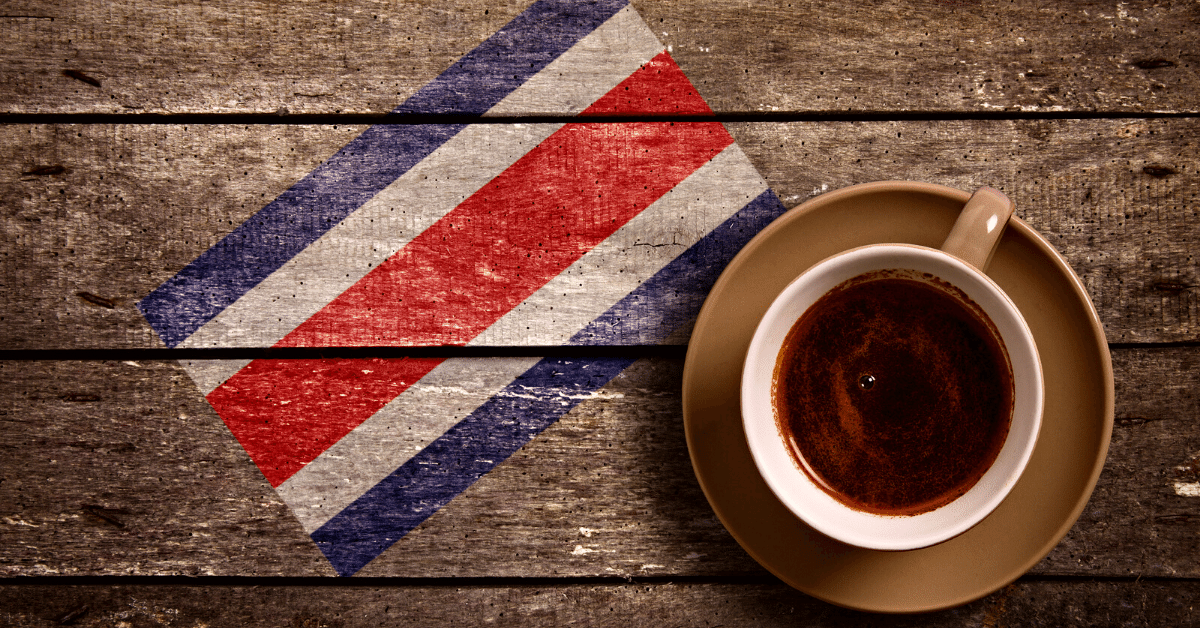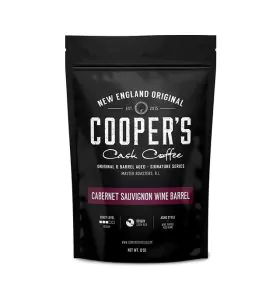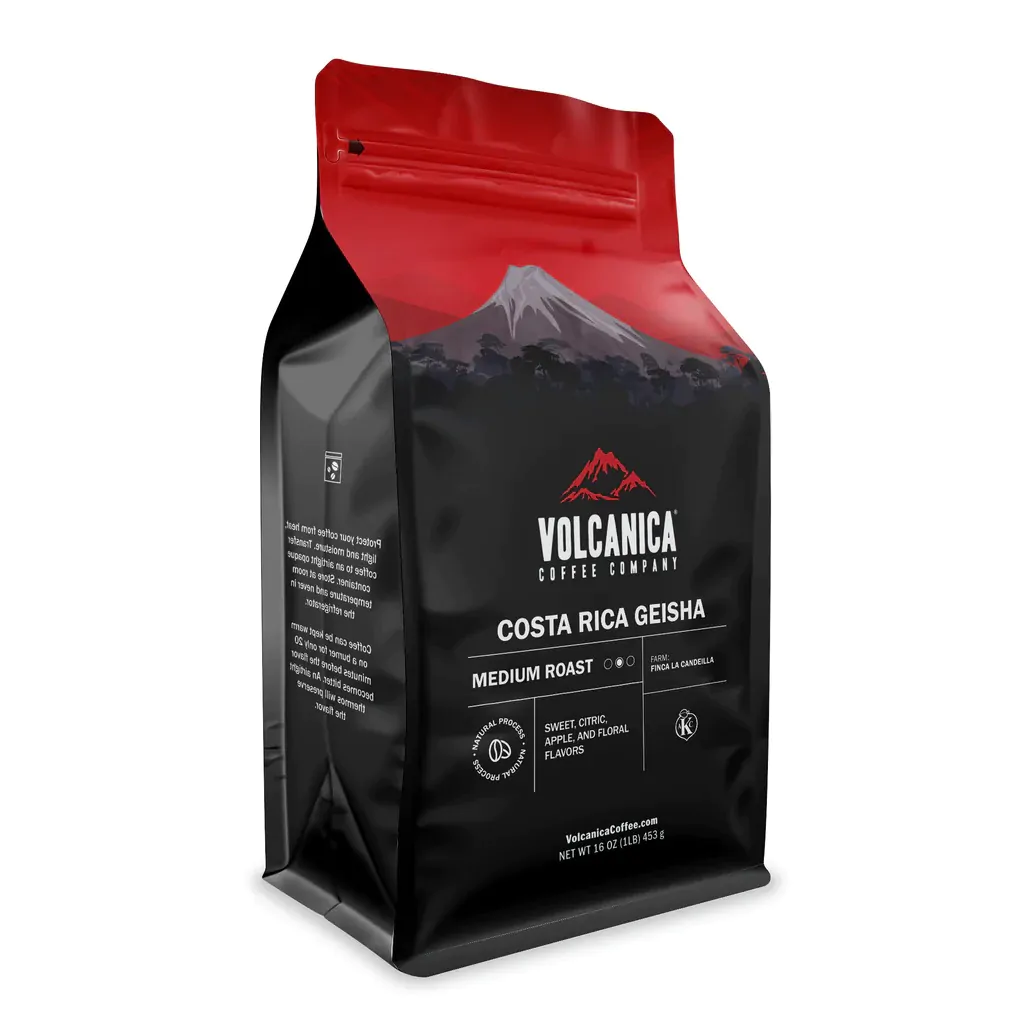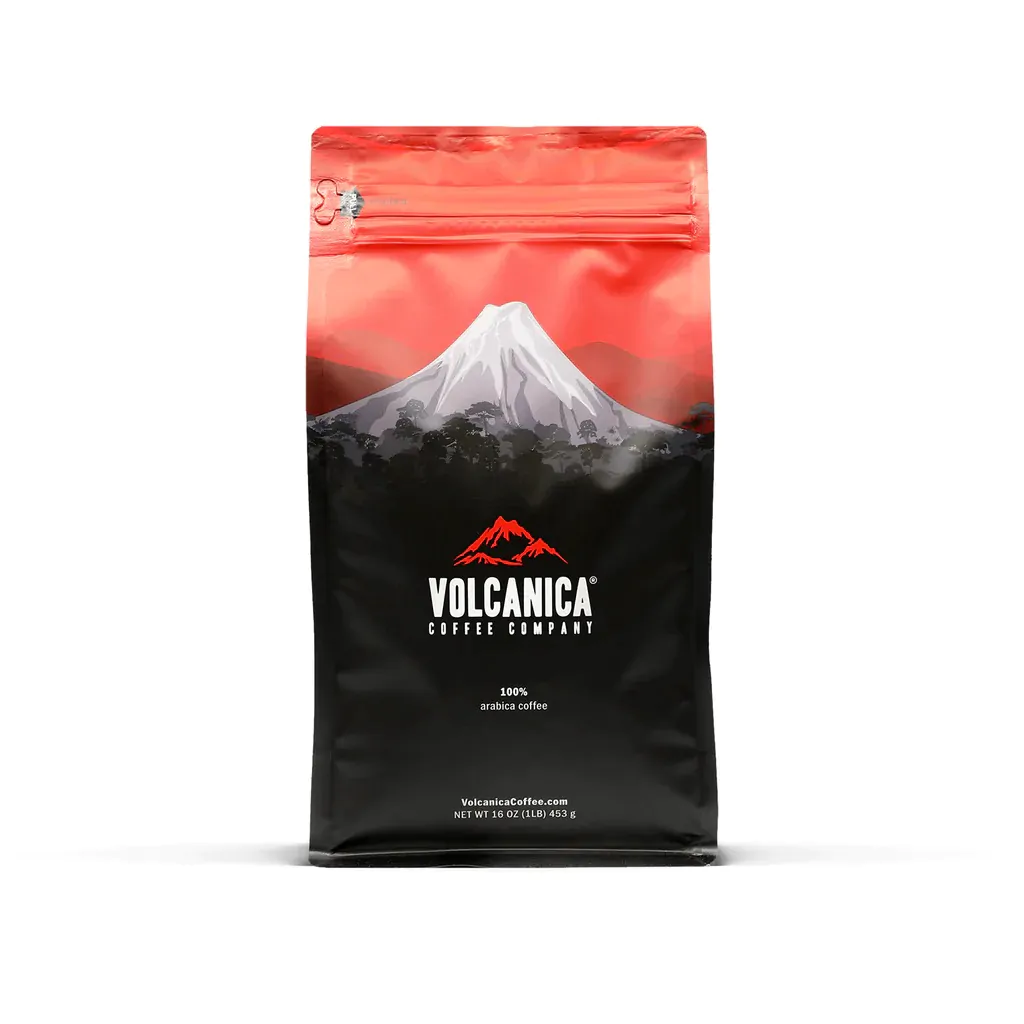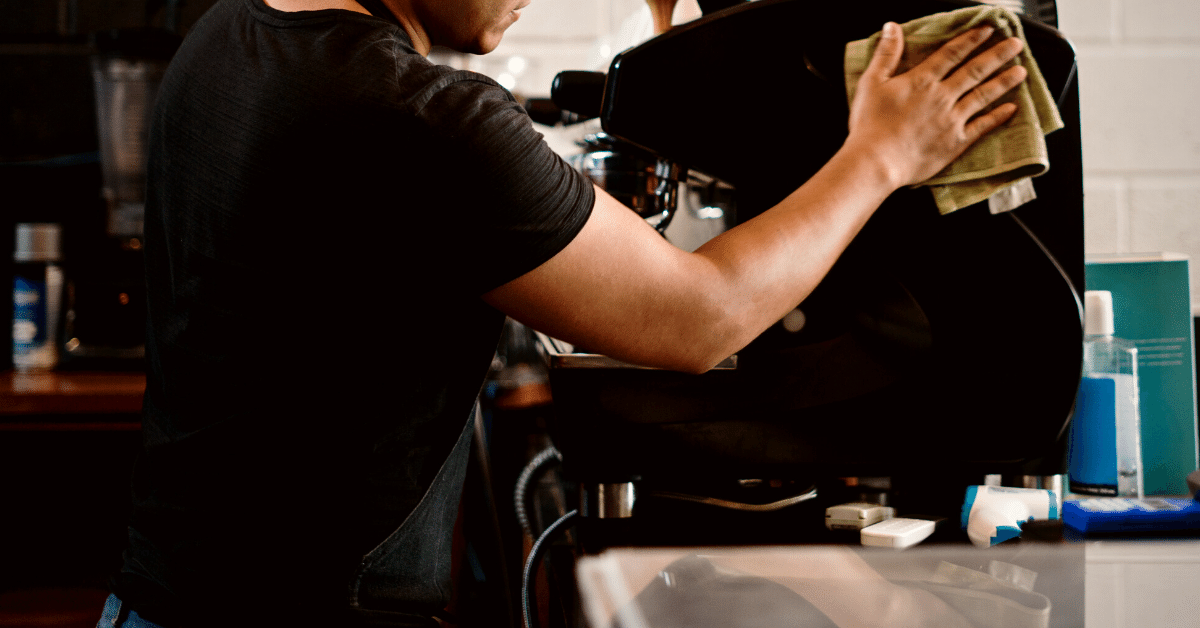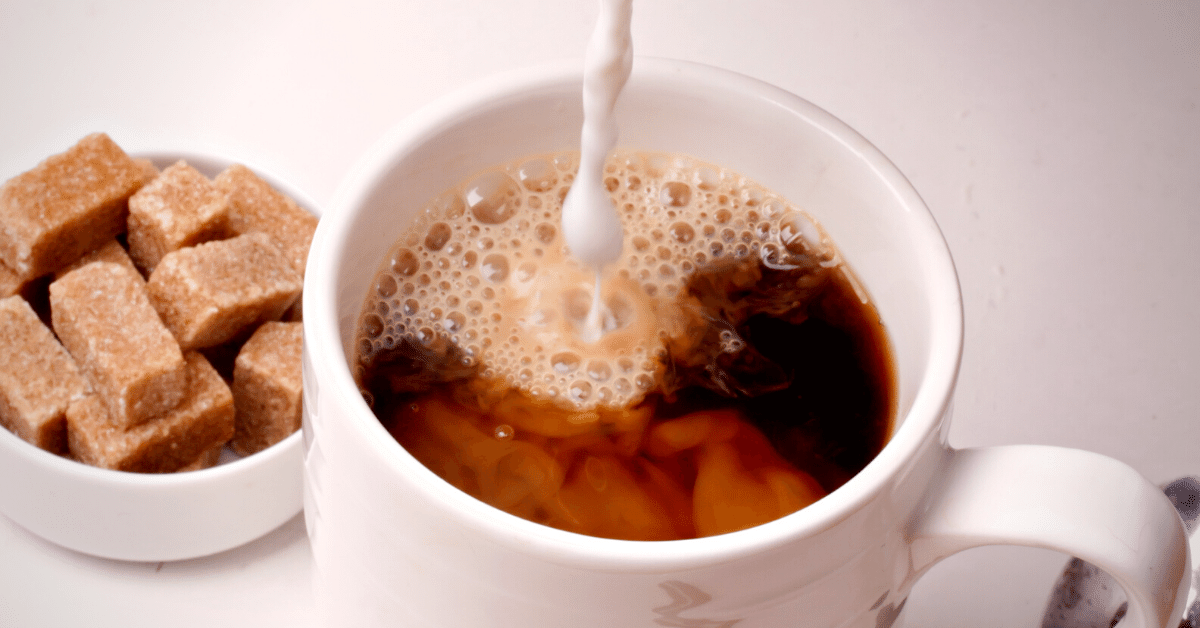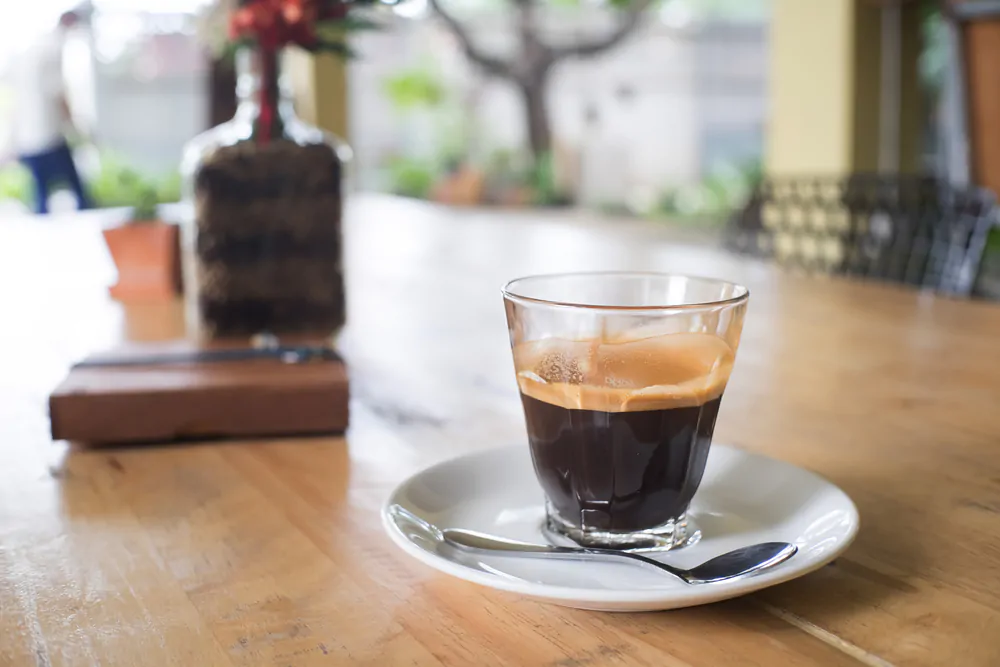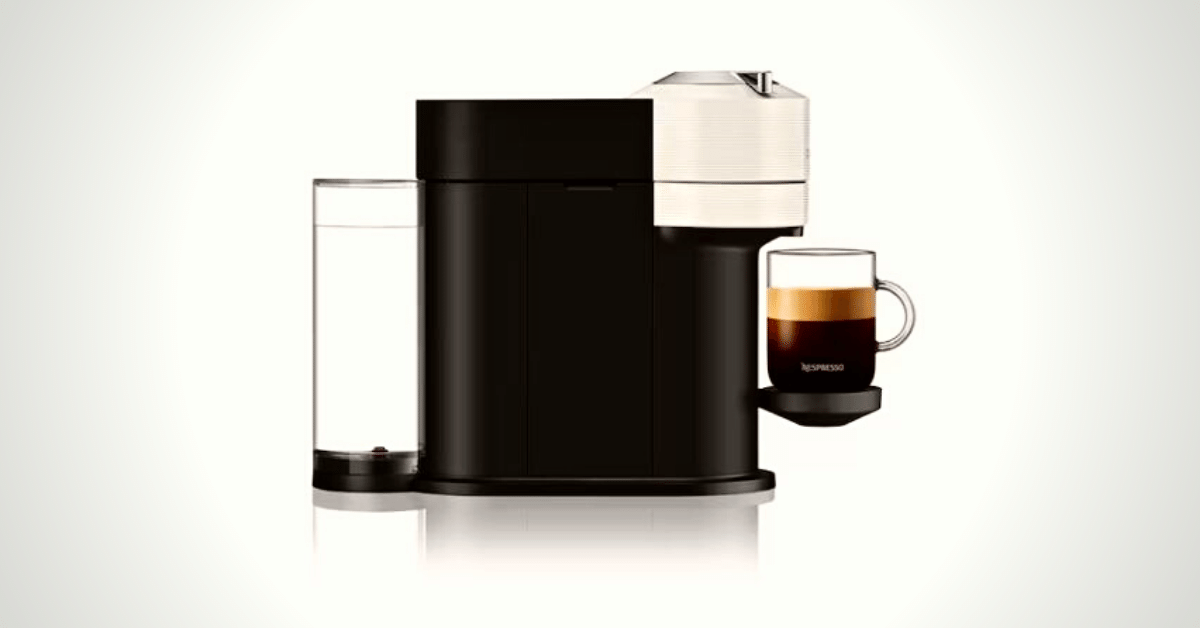Short on time? Our top choice is the Atlas Coffee Club Costa Rica Dark Roast K Cup Pod coffee.
Choosing the best Costa Rican coffee can be a challenge.
But there are a few things that stand out about Costa Rican coffee beans that can make the process a little easier.
I’ll break down our top choices and then give you a quick guide on how to go about choosing the right bag for you.
Let’s get to it!
6 Best Costa Rican Coffee Beans
- Atlas Coffee Club Costa Rica Dark Roast K Cup Pods (Best Overall)
- Volcanica Costa Rica Original Coffee (Best For Beginners)
- Volcanica Costa Rican Peaberry Coffee (Best Single-Farm Coffee)
- Cooper’s Cask Wine Barrel-Aged Coffee (Best for a Unique Experience)
- Costa Rica Geisha Coffee (Best for a Special Occasion)
- Costa Rica Tarrazu Decaf Coffee (Best Decaf)
Atlas Coffee Club Costa Rica Dark Roast K Cup Pods
The first thing you will love about this coffee without even brewing it is the package. Pods come in a beautiful colorful box that will be an aesthetic addition to your kitchen counter. What’s more, the box slides open like a drawer, and it’s very functional as a pod holder, so you don’t need to move them in a separate pod organizer.
Now let’s get to the coffee itself.
First of all, Atlas Coffee Club pods contain 20% more coffee than regular pods. That means you will get a more potent and bold cup of coffee from each pod.
This Costa Rica coffee comes as a dark roast with tasting notes of spiced fig, molasses, and roasted hazelnut. And although this dark roast is potent and bold, it’s still not overly bitter but smooth and flavorful.
Pods are recyclable and compatible with Keurig 1.0 and 2.0 brewers, and with most third-party brewers as well.
Still, it’s a pod coffee, so if you would like to brew with a different method, you will have to skip this one.
Pros
- The coffee is single-origin, which means you will get the taste unique to the region without any blends
- The company ensures ethically sustainable farming practices
- This coffee is curated from the 1% of the world’s best coffee, meaning you get an exceptional quality
- Pods are compatible with all Keurig models and other single-serve third-party brewers
Cons
- Pod coffee, so you are limited to one brewing method

Volcanica Costa Rica Original Coffee
I’m a big fan of Costa Rican coffee. They generally have a really nice sweetness and molasses mouthfeel.
This Volcanica coffee is quintessential Costa Rican.
With notes of apricot, juicy citrus, and tropical fruits, it’s a playful and delicious sipper.
The medium roast balances out the whole cup and actually makes this coffee pair pretty well with cream and sugar.
As with the most Costa Rican coffee bean, this is a washed process. This means the beans are separated from the fruit by soaking them in water.
The benefit of using a washed process is that it generally gives the flavor profile more clarity and crispness to the coffee bean.
Plus, this coffee is grown at a relatively high altitude, which means the cherries come ripe slower than at lower altitudes. This gives the beans more time to develop their flavor.
It’s also Rainforest Alliance and Kosher certified, so you can be sure the farming and processing are up to a high standard.
I do wish there was a light roast available. A lighter roast would better highlight the unique flavors of this coffee.
Pros
- Apricot, juicy citrus and tropical fruit notes are perfect for dipping your toes into Costa Rican coffee
- The washed process provides a crisp and clear flavor profile, giving you a great example of Costa Rican coffee
- This coffee has a deep flavor thanks to the high-altitude growing conditions
- Rainforest and Kosher certified, so the production of this coffee is quality
Cons
- No light roast available to better highlight Costa Rica’s unique flavors
Volcanica Costa Rican Peaberry Coffee
I’m not the biggest fan of peaberry coffees. I tend to find them overpriced and over-hyped for the quality.
However, this is Volcanica Costa Rican Peaberry is one I can get behind.
What’s a peaberry coffee bean? It’s actually a natural mutation in the coffee cherry where instead of the usual two seeds, there’s only one big one.
That single seed is what we call a peaberry because it has the shape of a pea.
It only happens in about 5% of a coffee crop each year, making it more expensive than other coffees. Many people claim it tastes better, but I’ve only found it to be marginally better.
This coffee, though, is outstanding.
It has notes of honey, lemon, and almond. It’s a really balanced coffee between acidity and viscosity.
It’s also a medium roast, so you’ll get a really balanced and smooth cup. Combine the roast with the washed processing of the green beans, and you’ll get crisp, clear flavors.
I wish there was a light roast version to highlight the unique flavors of the single estate this coffee comes from.
Pros
- Notes of honey, lemon, and almond make this a really delicious coffee for daily drinking
- The medium roast balances the unique flavors with some rounded aspects
- The washed process ensures a crisp and clear flavor profile
- Rainforest Alliance certified, so you can be sure the farming and processing are quality
Cons
- No light roast option to better highlight the single estate this coffee comes from
Cooper’s Cask Wine Barrel-Aged Coffee
As with any specialty drink out there, someone eventually will try something different. And that’s pretty much what barrel-aged coffee is.
Basically, barrel-aged coffee is green coffee beans that are aged in old wine barrels before being roasted.
The idea is that the barrels impart some of their aromas to the coffee beans once they are roasted and brewed.
Don’t worry, though, because all of the alcohol the beans absorb evaporates during roasting.
But is this Costa Rica coffee worth it?
Depends on if you want an interesting coffee or a single-origin experience.
The barrel-aging process takes away a lot of the nuance you’d otherwise find in a single-origin coffee. It masks the unique flavors of a specific country.
The tasting notes on this coffee are black cherry, chocolate hazelnut, and roasted oak. Those flavors aren’t really what Costa Rica coffee is known for, and that’s because of the barrel-aging process.
Now, this is still a phenomenal coffee, and you should consider getting a bag for the experience.
But if you’re looking for the best Costa Rican bean, I’d probably start with another option.
Pros
- A really interesting cup of coffee because of the barrel-aging process
- Notes of black cherry, chocolate hazelnut, and roasted oak create a really rich and flavored coffee
- Medium roast ensures a rounded and balanced flavor profile
Cons
- The barrel-aging masks the unique flavors of Costa Rican coffee
Costa Rica Geisha Coffee
There’s a reason this coffee is so dang expensive: because it’s so dang tasty.
Why are geisha coffees so sought after and pricey? Because the good ones are the best coffees in the world.
That’s not an exaggeration. They are some of the best coffees anywhere.
They can literally taste like sugary cereal.
This coffee is a great example. It has notes of citrus, apple, and florals. That makes it a pretty light geisha, but still with an incredibly deep and rounded profile.
Plus, this is a naturally processed coffee. That means the beans are left to dry out without first being separated from the fruit.
That gives the coffee more depth, a bigger flavor, and more punch.
The only problem? You need to really know what you’re doing to get the most out of this coffee.
That isn’t to say you should avoid geishas. If you have all the right gear and knowledge, then it’s a great investment.
But if you’re a beginner or don’t have high-quality brewing equipment, then it’s best to find a local shop serving geishas and try them out there.
Pros
- Geisha coffees are the best in the world, and this one is no different
- Notes of citrus, apples, and florals give this coffee a rounded and huge flavor profile
- The natural process makes this coffee delicious and more fruit-forward
Cons
- It’s very expensive
- It’s not a beginner-friendly coffee, you really need to know how to brew it to get the best value
Costa Rica Tarrazu Decaf Coffee
Decaf coffee can be really tricky to get right. Mostly because there are only a couple of ways to decaffeinate coffee.
One way is with chemicals. It’s cheaper and quicker, so many decaf coffees are made with chemicals. But the chemicals leave a pretty gross taste in the coffee and pretty much take away all flavor.
The other way is by using water instead of chemicals. It takes a lot longer, but it preserves the coffee flavor and doesn’t leave you with a chemical taste in your mouth.
This Decaf Costa Rican Tarrazu coffee is the latter.
It comes from the Tarrazu region in the interior mountains of Costa Rica. Tarrazu valley is acclaimed for growing coffee.
It’s decaffeinated using water. The process preserves the apple and nutty taste in the coffee and leaves you with a clean body.
And because it’s made without chemicals, it’s also Kosher certified.
This Tarrazu Decaf is a medium roast, which preserves some of the unique Costa Rican flavors but also gives you a balanced and rounded cup.
But it’s still a decaf coffee, so you’ll lose a lot of the classic Costa Rican flavors and body.
Pros
- Decaffeinated with the Swiss Water Method, so you don’t get a chemically taste in your coffee
- The medium roast preserves some of the Costa Rican flavors in your cup
- Because it’s made without chemicals, it’s also a Kosher-certified decaf coffee
Cons
- You’ll still lose some of the classic Costa Rican flavors and body because it’s a decaf
How to Choose the Best Costa Rican Coffee For You
Costa Rica produces nearly 200 million pounds of coffee every year. This means that narrowing down your choices to a single bag is a huge challenge.
But there are a few things you should consider before you pick one. And hopefully, those things will narrow down your choices.
What roast should you get?
I always tell people looking for good coffee that the lighter the roast, the better the flavor.
This isn’t necessarily always true. But with single-origin coffees, it’s a good place to start.
With lighter roast coffees, the beans preserve the natural flavors imparted to the beans while growing and processing.
A medium fresh roasted coffee is a good middle ground between retaining flavor and getting a truly balanced cup.
I would stay away from dark roast coffees when considering single-origin coffees. They tend to have few unique flavors and retain almost none of the country’s characteristics.
Another thing to consider is that specialty coffee shops don’t roast to a certain level. Instead, they create a specific roast profile for each coffee they work with.
So asking your barista about the roast levels for a coffee you’re interested in is a place to start.
What region should you look for?
Costa Rica is known for having crips and clean coffees with bright acidity and mellow flavors.
That said, there are so many coffee regions within Costa Rica that you still have a ton of choices.
But don’t worry too much. Unless you’re a trained coffee professional, you probably won’t be able to tell the difference between the regions within a specific country.
So my recommendation is to just look for a single origin coffee and not worry too much about the specific growing region.
That’s because Costa Rican coffees will generally share similar characteristics. You’ll get a good sense of Costa Rican coffee no matter the region.
How do you know if the coffee is sustainable?
This is a tough one.
There are certifications like USDA FairTrade, Organic, and Rainforest Alliance that you can look for.
However, not having those certifications doesn’t mean that coffee production isn’t sustainable.
When I worked for a specialty coffee shop, none of our farmers had those certifications. Why not? Because it was way too expensive for them and generally not worth the money.
So, I always tell people they should look more for the specific coffee plantation or even the farmer’s name when buying single-origin coffees.
There is a level of trust you need to have to buy single-origin coffees. Many companies in the coffee industry exploit farmers for profit.
A good way around this is to research the company and see if they have information about the coffee farmers they work with.
If the coffee shop is willing to tell you the name of the farmer, then the coffee is usually sustainable, ethical, and most likely really delicious.
Should you get whole bean or ground coffee?
I’ve said this many times, and I’ll say it again here: always buy whole bean coffee when you can.
The first thing you should buy when you want to start brewing at home is a good entry-level grinder.
Why? Because the grind size and freshness have the single biggest impact on your home coffee brew.
Freshly ground coffee is always better than pre-ground. So please, please buy whole bean coffee when possible.
Especially when getting into single-origin coffees.
If you do need to buy pre-ground coffee, I would recommend only buying one bag at a time. Only buying as much as you need for a week or two will help keep that coffee fresh and tasty.
My Final Words
After careful research, I have to say that the Atlas Coffee Club Costa Rica Dark Roast K-Cups is the best choice.
The taste of this coffee is flavorful and bold, without any bitterness that usually comes with the dark roast. You will feel delicate hints of spiced fig, molasses, and roasted hazelnut in every cup.
These pods are recyclable, and the coffee is ethically and sustainably sourced. So, you know the company takes care of the environment and farmers as well.
Plus, the box of these pods will look lovely on your kitchen countertop. It’s functional as a pod holder, so you won’t need any separate place to store your K-cups.
It’s definitely a great introduction to single-origin Costa Rican coffee.

